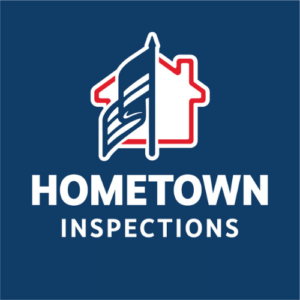Why is Mold a Structural Hazard?
By Emily Davis 7/30/2020
What is Mold?
Mold is a type of fungus. These small organisms can be black, white, orange, green, or purple and live almost anywhere indoors and outside. Molds thrive on moisture and reproduce through lightweight spores that travel through the air. You are exposed to mold every day. They are usually harmless in small amounts.
 Mold spores in the air we breathe.
Mold spores in the air we breathe.
Where can I find Mold?
Mold will grow in places with a lot of moisture, such as around leaks in roofs, windows, pipes, or where there has been flooding. Mold grows well on paper products, cardboard, ceiling tiles, and wood products. Mold can also grow in dust, paints, wallpaper, insulation, drywall, carpet, fabric, and upholstery

Why is Mold a structural hazard?
Actively growing mold feeds on organic matter such as wood, paper, cardboard, fabrics, and soap. As it feeds and grows, the mold gradually damages the surface, which can cause unsightly damage to the interior of a building.
Mold may cause serious structural damage to a building because it feeds on and breaks down organic matter. Therefore, when mold infests walls, insulation, paper backing, or carpeting, the materials must be removed.
Left unchecked, mold can cause damage great enough to lead to the collapse of ceilings, caving in of floorboards, and falling of walls. … Many materials in the home quickly become damaged beyond the point of repair, though, and in time, a home can be destroyed by mold growth.
Mold can be especially damaging to the floor framing members in a damp crawl space. In a matter of just a couple of years structural framing members can be severely compromised from the effects of mold growth. It is important to maintain a dry environment in the crawl space in order to prevent destructive mold growth.

How can I treat Mold?
Remediation costs vary depending on how much and where mold exists. … $500 to $4,000 to remove mold from crawl spaces only. $2,000 to $6,000 to remove mold from ducts, crawl spaces, walls, and attics.
It is important to know the type and size of the mold problem you are dealing with. The EPA considers any mold issue over 10 square feet to be too serious an issue to take care of yourself. In these cases you should contact a professional remediation company to deal with the mold cleanup. If the mold problem is a smaller issue, you may try to do the remediation yourself, though you want to take precautions and do so safely! If your health is poor and you have a weak immune system, I’d suggest you check into professional remediation as well.
After the cause of the mold is fixed (water damage, leak, humidity, etc), the mold will need to be scrubbed, killed, and cleaned off the material that you cannot remove and replace. Any mold on drywall or similar material should be cut out and replaced. There are many types of cleaners that can be effective against mold. You will need to research the best cleaner for the surface you are remediating and take the needed precautions and wear the proper protective masks, eyewear, gloves, and clothing for the job. You also want to ensure that the crawl space is properly dried to prevent the mold from returning.
Mold can be a very scary and serious dilemma, but don’t let the magnitude of the problem cause you to put off taking care of mold in your crawl space. The health of your home is connected with your health, and you certainly wouldn’t want to ignore serious symptoms that will only multiply. Prevention is a huge part of avoiding a mold disaster, so keep up with leaks, moisture, condensation, and any water damage in your home and crawl space. It can save you a huge headache later.

How do I get rid of mold in my crawl space?
Use plastic sheeting covers to insulate/encapsulate the crawl space floor and foundation walls. Vapor barriers like plastic sheeting covers trap the moisture that is evaporating from the soil and walls. If your crawl space is already insulated, inspect the insulation once or twice a year.

How common is mold in crawl space?
Over 60% of your crawl space air flows throughout your home so a seemingly isolated mold issue in the crawlspace can compromise your indoor air quality and begin to affect your health.
Most times, water in the crawl space gets there one of three ways: a plumbing leak, water seepage from the surrounding soil (usually after heavy rain), or condensation. Humidity condenses on cold surfaces, like ducts, and drips onto the crawl space floor.
Puddles of water in the crawl space aren’t good, but the water itself won’t ruin your home. It’s the water vapor (or moisture) that causes rot, mold, energy loss, and attracts pests. And these problems don’t just stay in your crawl space. As much as 50% of the air upstairs comes from below – this means mold spores, musty smells, and humid air that dust mites love.
What types of Mold are found in my home?



